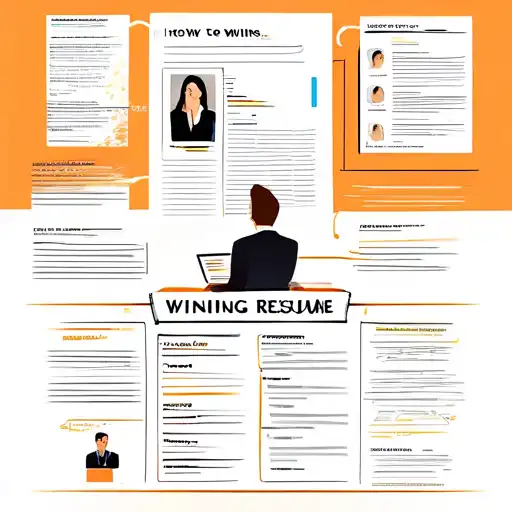Introduction
In today's competitive job market, having a winning resume is more important than ever. It's your first opportunity to make a lasting impression on potential employers. This guide will walk you through the steps to craft a resume that not only highlights your skills and experiences but also stands out from the crowd.
Understanding the Basics
Before diving into the details, it's crucial to understand what makes a resume effective. A well-structured resume should be concise, tailored to the job you're applying for, and free of errors. It should also include relevant keywords to pass through Applicant Tracking Systems (ATS).
Step 1: Choose the Right Format
There are three main resume formats: chronological, functional, and combination. The chronological format is the most common and is preferred by employers as it highlights your work history in reverse chronological order. The functional format focuses on skills and experiences, making it ideal for those with gaps in employment. The combination format, as the name suggests, combines elements of both.
Step 2: Highlight Your Contact Information
At the top of your resume, include your full name, phone number, email address, and LinkedIn profile (if applicable). Make sure your email address is professional, ideally consisting of your first and last name.
Step 3: Craft a Compelling Summary or Objective
This section should be a brief statement that summarizes your professional background and career goals. Tailor it to the job you're applying for, highlighting how you can add value to the company.
Step 4: Detail Your Work Experience
List your work experience in reverse chronological order, including the company name, your title, and the dates of employment. Under each position, include bullet points that describe your responsibilities and achievements, using action verbs and quantifiable results whenever possible.
Step 5: Showcase Your Skills
Include a skills section that lists both hard and soft skills relevant to the job. Be honest about your proficiency levels, and consider categorizing them if you have a wide range of skills.
Step 6: Add Education and Certifications
List your educational background, including the degree obtained, the institution's name, and the graduation year. If you have relevant certifications, include them here as well.
Step 7: Include Additional Sections If Relevant
Depending on your background, you might want to add sections for volunteer work, publications, or languages spoken. These can provide a more comprehensive picture of who you are as a professional.
Final Tips
Before submitting your resume, proofread it multiple times to ensure there are no typos or grammatical errors. Consider asking a friend or mentor to review it as well. Remember, your resume is a living document that should be updated regularly as you gain new experiences and skills.
For more career advice, check out our guide on how to ace your job interview.
Conclusion
Crafting a winning resume takes time and effort, but by following these steps, you can create a document that effectively showcases your qualifications and helps you stand out in the job market. Remember to tailor your resume for each application, highlighting the skills and experiences most relevant to the position.
